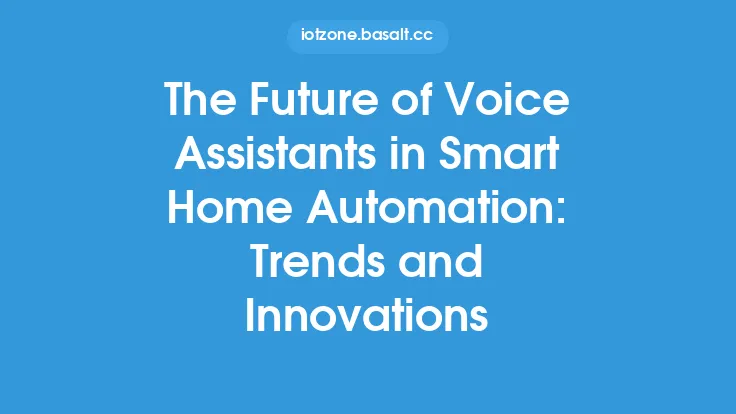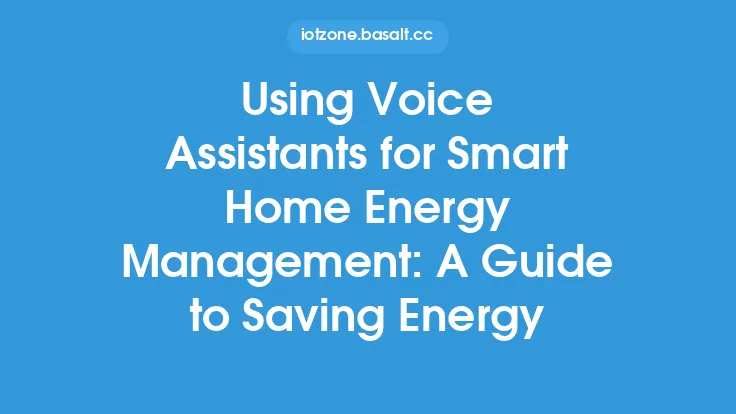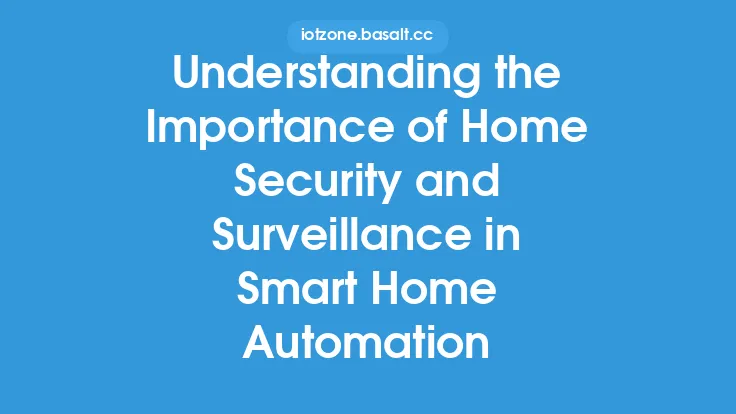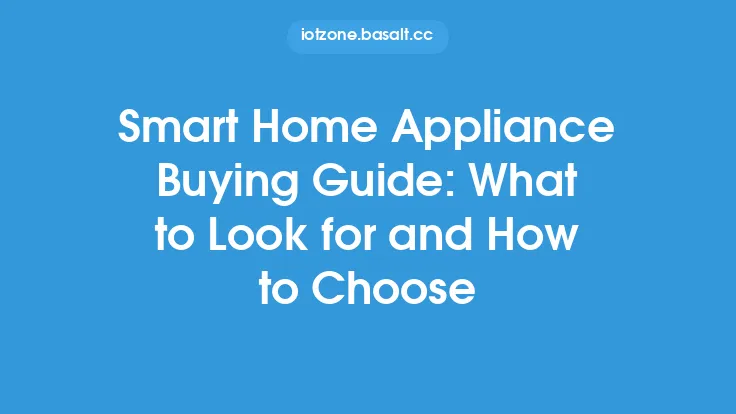The concept of voice assistants has been around for several years, but it's only recently that they've become an integral part of smart home automation. These virtual assistants, such as Amazon's Alexa, Google Assistant, and Apple's Siri, have revolutionized the way we interact with our smart devices, making it easier and more convenient to control our homes with just our voices. In this article, we'll delve into the world of voice assistants and explore how they're changing the landscape of smart home automation.
Introduction to Voice Assistants
Voice assistants are computer programs that use natural language processing (NLP) and machine learning algorithms to understand and respond to voice commands. They can be integrated into various devices, such as smart speakers, smartphones, and smart home hubs, allowing users to control their smart devices with ease. Voice assistants can perform a wide range of tasks, from simple actions like turning on lights to more complex tasks like adjusting thermostat settings and playing music.
How Voice Assistants Work
So, how do voice assistants work their magic? The process involves several steps. First, the user speaks a command into a device equipped with a microphone, such as a smart speaker or smartphone. The audio signal is then sent to the cloud, where it's processed by the voice assistant's algorithms. These algorithms use NLP to identify the intent behind the command, such as turning on the living room lights. The voice assistant then sends a signal back to the device, which executes the command. This entire process happens in a matter of milliseconds, making it seem seamless and instantaneous.
Smart Home Automation and Voice Assistants
Smart home automation involves the use of technology to control and monitor various aspects of a home, such as lighting, temperature, security, and entertainment. Voice assistants have become a crucial component of smart home automation, allowing users to control their devices with voice commands. This has made it easier for people to manage their smart homes, especially for those with mobility issues or who prefer a hands-free experience. With voice assistants, users can control multiple devices with a single command, creating a more streamlined and convenient experience.
Technical Requirements for Voice Assistants
To work effectively, voice assistants require several technical components. These include a microphone to capture the user's voice, a processor to handle the audio signal, and a connection to the cloud to access the voice assistant's algorithms. Additionally, voice assistants need to be integrated with the smart devices they're controlling, which requires a common communication protocol such as Wi-Fi, Bluetooth, or Zigbee. The voice assistant also needs to have a robust NLP system to accurately understand the user's commands and intent.
Benefits of Using Voice Assistants for Smart Home Automation
The benefits of using voice assistants for smart home automation are numerous. For one, they provide a hands-free experience, allowing users to control their devices without having to physically interact with them. This is especially useful for people with mobility issues or who are busy with other tasks. Voice assistants also make it easier to control multiple devices with a single command, creating a more streamlined and convenient experience. Furthermore, voice assistants can learn a user's preferences and habits over time, allowing them to make personalized recommendations and automate routine tasks.
Limitations and Challenges of Voice Assistants
While voice assistants have revolutionized smart home automation, they're not without their limitations and challenges. One of the main issues is the accuracy of voice recognition, which can be affected by background noise, accents, and dialects. Additionally, voice assistants require a stable internet connection to function, which can be a problem in areas with poor connectivity. There are also concerns about privacy and security, as voice assistants are constantly listening and collecting data on user interactions. Finally, the integration of voice assistants with smart devices can be complex and require technical expertise, which can be a barrier for some users.
The Future of Voice Assistants in Smart Home Automation
As technology continues to evolve, we can expect to see even more innovative applications of voice assistants in smart home automation. One area of development is the use of edge computing, which allows voice assistants to process commands locally on the device rather than in the cloud. This can improve response times and reduce latency, making the experience even more seamless and instantaneous. Another area of development is the integration of voice assistants with other technologies, such as artificial intelligence and the Internet of Things (IoT). This can enable even more advanced automation and control capabilities, such as predictive maintenance and energy optimization.
Best Practices for Using Voice Assistants in Smart Home Automation
To get the most out of voice assistants in smart home automation, there are several best practices to follow. First, choose a voice assistant that's compatible with your smart devices and integrates well with your existing ecosystem. Second, invest in a high-quality smart speaker or device with a good microphone, as this can improve the accuracy of voice recognition. Third, take the time to customize your voice assistant's settings and preferences, such as setting up routines and scenes, to get the most out of its capabilities. Finally, stay up-to-date with the latest developments and updates in voice assistant technology, as this can help you stay ahead of the curve and take advantage of new features and capabilities.
Conclusion
In conclusion, voice assistants have revolutionized the world of smart home automation, providing a convenient and hands-free way to control our devices. By understanding how voice assistants work and their technical requirements, we can appreciate the complexity and innovation behind these virtual assistants. While there are limitations and challenges to using voice assistants, the benefits they provide make them an essential component of any smart home ecosystem. As technology continues to evolve, we can expect to see even more exciting developments in the world of voice assistants and smart home automation.





